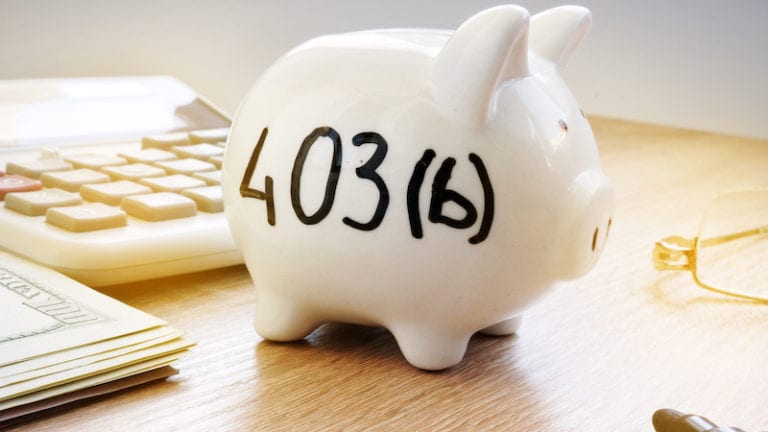Whether you’re a teacher in your 20s or 60s, you’ve probably given some thought to life after retirement. Do you dream about moving somewhere warm and reading by the pool or traveling the world? Do you hope to spend your days gardening, crafting, or seeing family? It’s fun to dream about retirement but to make it a reality, we need to plan. It’s never too early, or too late, to start, so we created this age-by-age retirement planning checklist for teachers.
Age-by-age retirement planning checklist for teachers
A pension is usually a public educator’s primary way to fund retirement. However, most of the time, our pensions fall short of our current salary. We usually need to supplement pensions with savings to set ourselves up for living our best life after retirement. Using our age-by-age retirement planning checklist for teachers is a good place to start. The next step is working with a professional financial representative who can help create a personalized solution that bridges the gap between pension benefits and current salary.
“Just choosing an arbitrary dollar amount to put away each month is not enough,” says Alex Kocoves, CEO of GLP Financial Group and a professional who has helped educators meet their retirement goals for the past 35 years. “Yes, the more, the better, but the determining factor for how much to save is: will that amount put you in the position to meet your goals?”
If you’re in your 20s …
Life goes by in a blink of an eye, especially when you’re a busy teacher. We know, it’s hard to believe when you’re fresh out of college and basking in the bliss of your very first classroom. However, the reality is, the sooner you start planning for retirement, the better. Your 20s is a perfect time to start using this retirement planning checklist because you have time on your side and can take advantage of the power of compounding returns—which basically means your money grows faster, and you may not need to put away as much to reach your goals.
1. Understand your district’s retirement benefits
“All retirement systems are different,” says Kocoves, “and districts don’t always provide sufficient information to educate employees about their pension plans.”
Some states offer two choices: a defined benefit plan or a defined contribution plan. A defined contribution plan provides you with a lump sum at the end of your service to use as you please. A defined benefit plan gives you smaller, regular payments for the rest of your life. Some districts only give new teachers 45 days to decide which plan they’ll have to stick with for their entire career, so it’s important to understand the options and timelines.
2. Learn the differences between a 403(b) and 457(b), and choose based on your benefits
“It’s important to save on your own because you want to be in the position where you control your financial future,” says Kocoves. “The more you protect yourself, the better.”
That being said, you need to pick the right option to meet your goals. Two types of retirement accounts for public educators are the 403(b) and 457(b). Both are deferred compensation plans for non-profits, and while there are differences between them, both plans may provide a tax break because they lower your taxable income by the amount of the contributions. The more you contribute, the greater the potential tax break.
3. Decide how much to spend and save
Kocoves advises people in their 20s to get in the habit of investing from the very beginning, as well as work side-by-side with their financial representative. “I don’t want my clients to just randomly pick a dollar amount to defer into an account every paycheck,” says Kocoves. “It’s important for them to fully understand what they’re doing and why they’re doing it—to be informed and involved so they can get what they are entitled to through the plans offered.”
If you’re in your 30s …
In your 30’s you’re settling into your teaching career. Your classroom probably runs like a well-oiled machine. Maybe you’re married, maybe you started a family, maybe you want to buy a home. Your financial burdens could be starting to build. It’s easy to be tempted to take a break from saving or investing and use the money for other things. However, it’s important not to abandon your long-range plans.
1. Keep building your nest egg
Remain committed to setting aside money for retirement. Meet regularly with your financial representative to look at your investments and make sure they’re on track. Use your annual pay raises to bump up your contributions. If you’re in your 30s and new to teaching, roll over any retirement savings you’ve earned from past jobs.
2. Pay off student loans and other high-interest debts
Don’t let student loans get in the way of providing for your future. Pay them off as quickly as you can. You might consider using gifts from family or tax returns to bring the balance down. And though it’s harder than it sounds, try your best to avoid credit card debt.
3. Plan for unexpected events
You’ve worked hard to set up your investments for the future. Now it’s time to protect them. Ask your financial representative about a Living Benefits plan. These policies provide you with life, disability, and options to help cover expenses like an assisted living or nursing home facility, all rolled into one policy. “If you don’t have the protection against unforeseen events,” cautions Kocoves, “your assets can be gone just like that.”
If you’re in your 40s …
In your 40’s, you’re likely in it for the long run. You’re probably a trusted mentor at your school, and maybe you’ve received advanced certifications or taken on a leadership role, which could mean a higher salary. However, at the same time, your own kids are growing, and you’re saving for college. You might own a house that needs to be maintained. Your financial burden is heavy, especially if you have a family.
1. Stay the course
It may be tempting to redirect money from your retirement account to cover other expenses, but for the sake of your long-term future, don’t do it. Continue to meet with your financial representative regularly, make your scheduled contributions, and follow through on your plan.
2. Consider the financial risks you’re willing to take
“Stuff happens,” says Kocoves, “and plans sometimes change the closer you get to retirement.” A well-managed plan, however, has the ability to pivot. While you may have been excited about the hottest new investment in your 20’s, you may want something less flashy now. Adjust your asset allocation to match your risk tolerance.
3. Start saving if you haven’t already—it’s not too late
You may wish you had started earlier, but the reality is until you’ve built up your nest egg, you won’t be able to afford to retire. So, the sooner you put a plan in place, the better you’ll feel.
If you’re in your 50s …
If you’ve been using this retirement planning checklist, you know that retirement is within reach. You’ve put in your time as an educator, and you’re starting to look forward to the final stretch. You may have children in college and plan to work for a few more years to continue to save for retirement, but your financial responsibilities are starting to taper off.
1. Start running the numbers
Meet regularly with your financial representative to make adjustments to your asset allocation and make sure you are on track. Shift your portfolio to more conservative options to match the risks you’re willing to take. A more conservative approach may be just the ticket to provide you with enough income to hold you for the long haul.
2. Spend wisely
Pay off remaining debt, like loans, credit cards, and your mortgage, if possible. You may be tempted to purchase a vacation home or take that trip around the world, but make sure the reality of your financial situation supports your immediate dreams.
3. Take advantage of catch-up contributions
Many investment plans allow you to increase your contributions after the age of 50. Some allow you to really crank it out once you are within three years of retirement. Check with your financial representative to find out what’s possible.
A note on early retirement:
This year, there has been a noticeable uptick in educators thinking about early retirement, which is likely a result of the stresses of COVID teaching. Retirement takes planning and a heads-up to the district.
“The first question you should answer is,” says Kocoves, “are you eligible?”
Most districts use a rubric that combines age and years of service. If you’re not eligible, any money you’ve accrued might be held until you’re a certain age, for example, 60 in Michigan, 62.5 in other states. Most districts offer different options for retirement payouts. Usually, teachers need to make their decision six months before actually retiring. And once you make your choice, you’re locked in for the duration.
If you’re in your 60s …
This is it! That retirement party is right around the corner. The name of the game now is moving from building and protecting your money to distributing and preserving it.
1. Run the final numbers
Before you take the plunge, run final numbers for your distribution with your financial representative. Make the modifications or adjustments needed to make sure your choices provide you with enough money to last the rest of your life.
2. Focus on preserving your money
You’ve worked hard to build your nest egg. Now is the time to protect it from being depleted by taxes, disabilities, or long-term care costs.
3. Start estate planning
This is also the time to think about setting up a trust, will, and medical directives. This protects your assets for years to come and spares your family the time, costs, and obstacles associated with managing finances in your absence.
Ready to get started with retirement planning?
You never know what life is going to throw at you, but regardless of your age or what point you’re at in your career, reviewing this financial planning checklist for teachers can help you make the retirement lifestyle you dream about a reality. The next step is to work with a financial representative to come up with a personalized plan.
“If you take the right action with the right people,” says Kocoves, “you’re going to be okay.”

